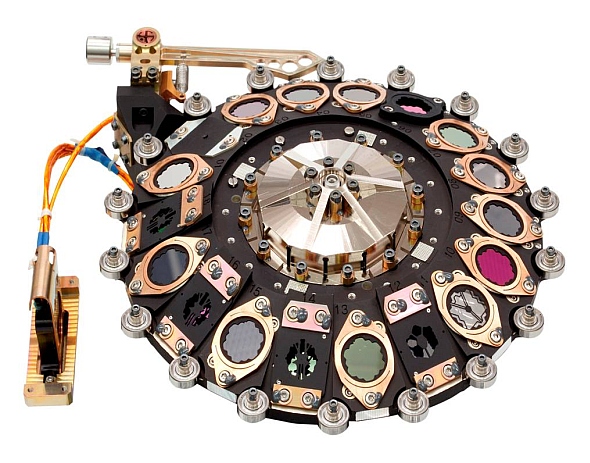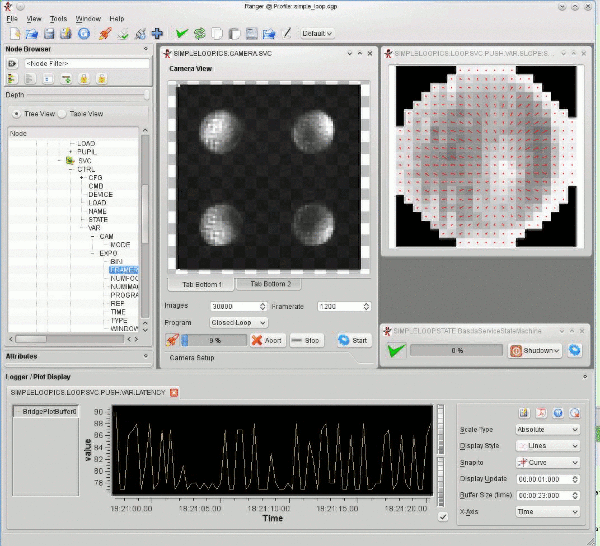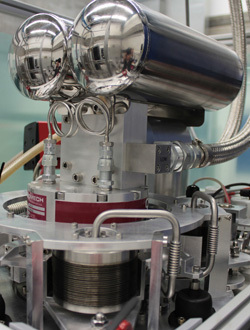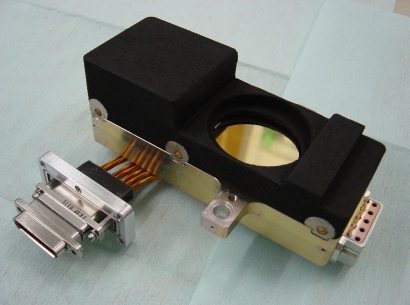| Version 293 (modified by , 7 years ago) (diff) |
|---|
The AstroTechTalk (ger) offers a place to discuss, for all interested colleagues and especially for the technical departments, the project leaders, the administration and the scientists as the ultimately users:
- status of instrumentation projects
- scientific tasks and features of the instruments in construction or planned
- new possible involvements
- technical innovations and developments
- technical problems and their solutions
- logistical problems and their solutions
- how to improve operation and observation
- project standards.
Time: Always Fridays 11:00 - 12:00 (during the construction work: 10:00 - 11:00)
Location: MPIA Hörsaal (during the construction work: HdA Auditorium)
Outline:
- Announcements (news, visitors, etc.) (mainly in German)
- Talk of about 30 min about a selected topic (German or English, will be announced)
- Follow up discussion and questions (German or English, depending on the speaker)
Proposals for talks: Please send an email to "hofferbert -at- mpia.de" or "naranjo -at- mpia.de" - alternatively you might reach us by phone (06221-528209 or -290) or in person (room 211 or 018) at MPIA.
| Date | Speaker | Topic |
| 22.09.2017 (10hrs, HdA) | First talk after the summer break | |
| 29.09.2017 (10hrs, HdA) | ||
| 06.10.2017 (10hrs, HdA) | ||
| 13.10.2017 | -- | No talk (MPIA Science Day) |
| 20.10.2017 (10hrs, HdA) | TBC room availability | |
| 27.10.2017 (10hrs, HdA) | ||
| 03.11.2017 (10hrs, HdA) | ||
| 10.11.2017 (10hrs, HdA) | -- | No room available |
| 17.11.2017 (10hrs, HdA) | Hans J. Kärcher (MT Mechatronics GmbH) | Das Denken in Kräften (als Hilfsmittel beim Entwerfen von Teleskopstrukturen) Was ist eine Kraft? Man kann darüber ins Sinnieren kommen und Philosophen haben darüber ganze Bücher geschrieben. Ludwig Büchner, ein „bürgerlicher Materialist“ des 19ten Jahrhunderts, schrieb in seinem Buch „Kraft und Stoff“: „Kraft kann nichts weiter sein als eine Eigenschaft der Materie“, oder „Kräfte lassen sich nicht mitteilen, sondern nur wecken“, und da ist er offensichtlich bei Isaac Newton, dem ja angeblich beim Beobachten eines vom Baum fallenden Apfels das „Denken in Kräften“ einfiel. Daraus hat sich später als Ingenieurdisziplin die „Strukturmechanik“ entwickelt, mit der ursprünglichen Anwendung im Brückenbau und Hochbau, später anspruchsvoller im Flugzeugbau und in der Raumfahrt. Das „Denken in Kräften“ wurde in der Mitte des 19ten Jahrhunderts in Form der „graphischen Statik“ zur Ingenieurdisziplin ausgebaut. Dabei lernt man, parallel zur Konstruktionszeichnung einen Kräfteplan zu zeichnen, und parallel in den beiden „Räumen“, dem „physischen Raum“ und dem „Kraftraum“ zu denken. Das hat etwas Ähnlichkeit mit der Projektiven Geometrie, in der es ja auch duale Räume, den Raum und den Gegenraum gibt. Hans Kaercher wird diesen Ansatz an drei Beispielen erläutern: 1) dem Entwerfen von Reflektoren für Radioteleskope; 2) dem Entwerfen der Primärspiegel-Auflagerung für große optische Teleskope; 3) dem Entwerfen von Montierungen für das Nachführen von Groß-Optiken am Himmel. Die Beispiele werden anhand aktueller Projekte erläutert, wie dem 110m Radioteleskop QTT und dem extrem großen optische Teleskop GMT. Presentation: German Slides: English Questions: German, English |
| 24.11.2017 (10hrs, HdA) | ||
| 01.12.2017 (10hrs, HdA) | Thomas Henning (TBC) | Technology Development at the MPIA |
| 08.12.2017 (10hrs, HdA) | ||
| 15.12.2017 (10hrs, HdA) | Stefan Hippler | High-Contrast Imaging |
| 22.12.2017 (10hrs, HdA) | Last talk before the Christmas break |
Peview:
xx.xx.2018 - Presenter: Title
Postview:
Presentations from 12.09. - 31.12.2014
Presentations from 01.01. - 31.07.2015
Presentations from 01.08. - 31.12.2015
Presentations from 01.01. - 31.07.2016
Presentations from 01.08. - 31.12.2016
Attachments (11)
- instrum8_gr.jpg (82.6 KB) - added by 10 years ago.
- instrum4_gr.jpg (104.4 KB) - added by 10 years ago.
- pedv3_gr.jpg (213.9 KB) - added by 10 years ago.
- alfa3.5.gif (235.6 KB) - added by 10 years ago.
- CIAO.jpg (3.8 MB) - added by 8 years ago.
- linc_nirvana_labor.jpg (255.2 KB) - added by 8 years ago.
- MATISSE.jpg (43.1 KB) - added by 8 years ago.
- miri_fm_filterwheel.jpg (145.6 KB) - added by 8 years ago.
- PACS-Chopper.jpg (80.0 KB) - added by 8 years ago.
- simple_loop.gif (965.4 KB) - added by 8 years ago.
- teaser.jpg (13.5 KB) - added by 8 years ago.
Download all attachments as: .zip







